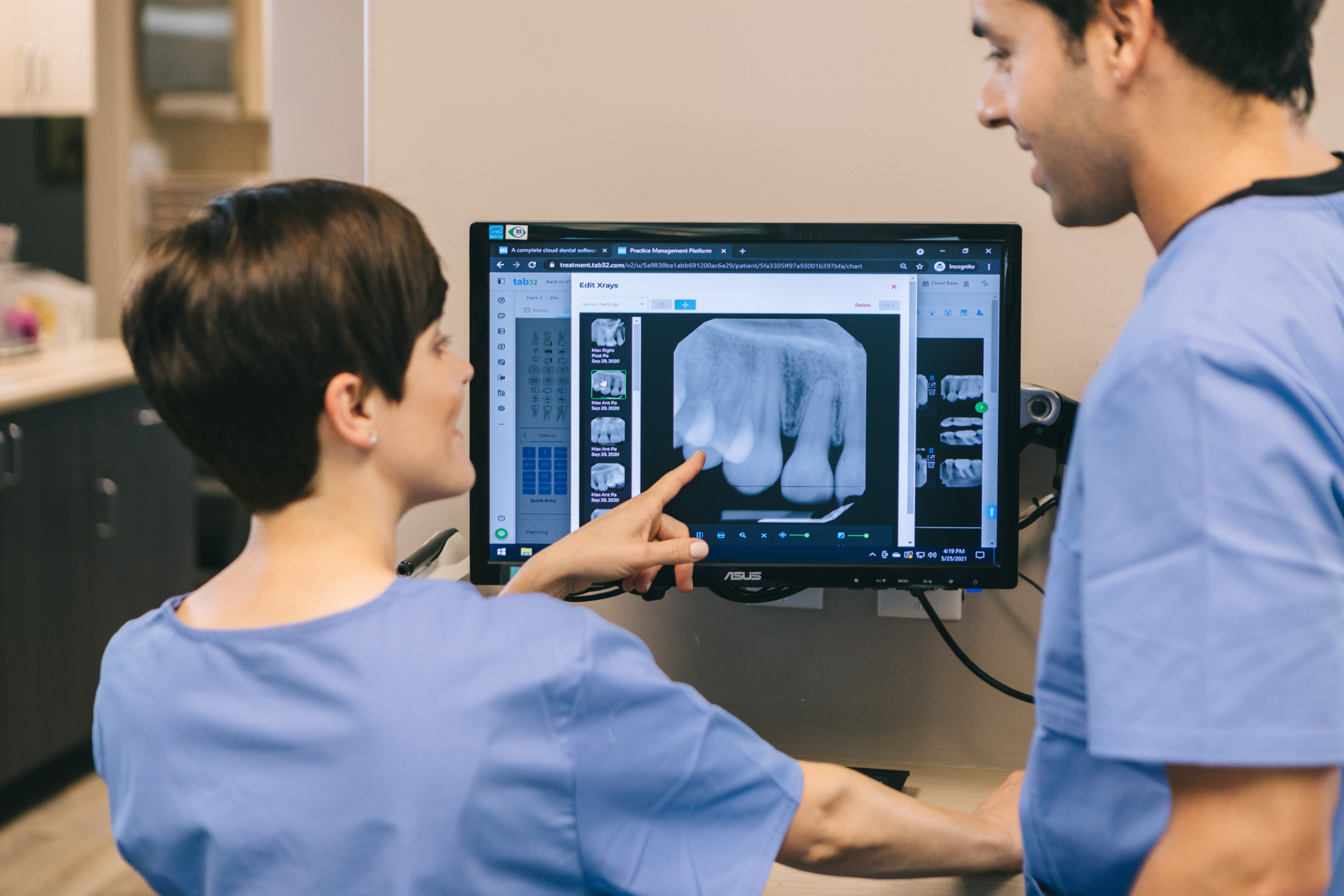
Dental imaging capabilities are essential for any dental practice. But the hardware is only half of the story. You also need software to analyze, manipulate, and annotate the images to support effective diagnosis and treatment planning.
Dental imaging software allows dental professionals to capture, store, and analyze dental images of teeth, gums, and jaws. The diagnostic tool helps dentists identify and treat conditions such as cavities, gum disease, and tooth decay. It can also support the planning and monitoring of dental procedures like root canals, crowns, and bridges to improve treatment outcomes.
Dental imaging software helps you gain a 360-degree view of a patient's condition and improve diagnostic accuracy. Meanwhile, you can use the images to improve patient education and increase compliance with treatment plans.
Dental imaging software supports various types of imaging capabilities:
When taking intraoral images, the film goes inside a patient’s mouth. There are three types of intraoral images: bitewing X-rays, periapical X-rays, and occlusal X-rays.
It’s the most common imaging type and provides a high level of detail. You can use the images to find cavities, examine the roots of the teeth, see the health of the bony area around a tooth, check the status of developing teeth, and monitor tooth health.
When you take an extraoral X-ray, the film stays outside the mouth. These images give you a big-picture view, showing the teeth, jaw, and skull. The three common types of extraoral images are panoramic X-rays, cephalometric X-rays, and cone beam CT scans.
These images can help you track growth and development, assess the status of impacted teeth, and examine the relationships between teeth and jaws.
A dental 3D scan allows you to view dental anatomy from different angles. You can gain a detailed image of bone structures to locate canals and root fractures. You can also measure anatomical structures more accurately.
Dental imaging software combines pictures from various angles in a single orbit to create 3-D dental X-ray images. The technology allows patients to spend less time on the X-ray machine while eliminating the risk of image blemishes caused by movement.
Look for these essential features and functionalities when selecting dental imaging software for your practice:
Your software should allow you to capture multiple images of teeth, gums, and other parts of the mouth and analyze them alongside the chart for accurate diagnoses and effective treatment planning. tab32’s Imaging Studio™ allows you to compare a broad range of images side by side to support effective patient communication and treatment plan presentation.
Dental imaging software with advanced 3-D modeling functionalities allows you to interact with precise models of a patient’s teeth and gum. You can take accurate measurements, detect diseases, and plan treatments effectively.
Choose a cloud-based application to support real-time collaboration among specialists, even from different locations. Your team can also access the images when they’re not at the office to improve productivity and provide prompt responses to patient inquiries. Additionally, look for a platform with robust offline capabilities so your operations won’t get interrupted even if your internet services are.
Streamline the billing process and minimize errors by entering diagnostic codes during treatment. tab32’s explosion codes and quick entry buttons help you enter all the details accurately with just a few clicks. The medical history pop-up makes referencing patient data a breeze. Meanwhile, you can send pre-authorization directly from a patient’s chart to facilitate workflows.
Your dental imaging software should fit with your processes and work with your existing equipment, so you don’t have to reinvent the wheel. It should have an intuitive interface to drive staff adoption so your employees can become productive quickly.
Choose a vendor that provides extensive customer support to ensure seamless implementation and helps you provide staff training so everyone can use the technology effectively.
tab32 helps dental practices of all sizes improve operational efficiency with a patient-centric approach. Learn more about Imaging Studio and request a demo to see how we can help you leverage the latest imaging capabilities to deliver the best treatment outcomes.
These Stories on Tips for New Practice Owners
No Comments Yet
Let us know what you think